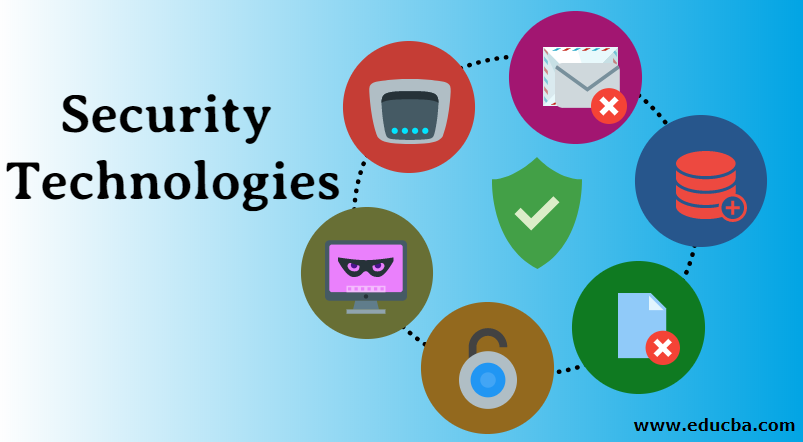IBM ITBench: Setting a New Standard for Enterprise AI Evaluation
IBM's IT Automation Benchmarking Platform Now Public
IBM Research has officially launched ITBench as a Software-as-a-Service (SaaS) platform, marking a significant step towards standardizing AI evaluation metrics across the enterprise IT automation landscape. This move, in collaboration with the AI Alliance, seeks to bring transparency, domain-specific metrics, and collaborative opportunities to the forefront of AI adoption in IT operations.
Initially introduced as a limited academic beta in February, ITBench has evolved into a comprehensive platform aimed at establishing an industry benchmark for measuring the effectiveness of AI in IT operations. The public release signifies IBM's commitment to fostering broader adoption of standardized AI evaluation methods within the enterprise sector.
Daby Sow, Director of AI for IT Automation at IBM Research, emphasized the collaborative nature of this initiative, stating, “We aim to leverage our collaboration with open source communities like the AI Alliance to expand ITBench into new domains and real-world scenarios across complex IT environments. By open-sourcing the tool, we are inviting partners to help shape benchmarks and build responsible, standards-based evaluation practices.”
Key Enhancements in the Public Release
The public release of ITBench includes several platform enhancements designed to streamline the benchmarking process and provide more comprehensive insights into AI performance.
- Complete SaaS Implementation: ITBench now operates as a fully functional SaaS platform, automating environment deployment and scenario execution. This eliminates the need for manual configuration, simplifying the benchmarking process for users.
- Public GitHub Leaderboard: IBM has launched a public leaderboard hosted on GitHub, offering transparent tracking of performance metrics across various vendors and solutions. This fosters competition and innovation in the IT automation space.
- Expanded Scenario Coverage: Based on feedback from the beta period, ITBench now includes 94 realistic scenarios across three critical enterprise domains: Site Reliability Engineering (SRE), Financial Operations (FinOps), and Compliance and Security Operations (CISO).
Addressing the AI Evaluation Gap in Enterprises
ITBench is designed to address a fundamental gap in the enterprise market by providing evaluation metrics specifically tailored for mission-critical IT operations. Unlike existing AI benchmarks that primarily focus on coding skills or chat capabilities, ITBench focuses on evaluating AI's impact on operational resilience and business outcomes.
Sow highlighted the importance of standardized benchmarks, noting, “Without standardized tests or benchmarks, it is nearly impossible to assess which systems are truly effective. That is why robust benchmarking is essential — not just to guide adoption, but to ensure safety, accountability, and operational resilience.”
The platform distinguishes itself from other benchmarking approaches by focusing on the end-to-end evaluation of AI agents within dynamic IT environments. Current industry benchmarks often concentrate on narrow capabilities such as static anomaly detection or tabular ticket analysis, failing to capture the complexity inherent in real-world enterprise IT operations.
Domain-Specific Evaluation and Partial Credit System
A key feature of ITBench is its domain-centered evaluation metrics, which are specifically tailored to the needs of different enterprise functions. This approach allows for a more nuanced and relevant assessment of AI performance compared to generic AI benchmarks.
Sow explained, “The evaluation metrics are domain-centric, tailored to the specific needs of SREs, CISOs, and FinOps. For example, SRE tasks focus on fault diagnosis, checking how well an AI agent can find where a problem started and how it spread, and mitigation, how quickly issues are resolved.”
In addition to domain-specific metrics, ITBench incorporates a partial scoring system that goes beyond simple pass/fail evaluations. This system awards partial credit for meaningful progress, even if the final answer isn't perfect, providing a more realistic assessment of AI capabilities.
While this approach has the potential to offer a more accurate evaluation, the challenge lies in establishing credibility across multiple vendors and mitigating potential biases that could favor particular approaches.
Open Source Approach with Strategic Restrictions
IBM describes ITBench as a free, open SaaS platform, but it's important to note that there are certain limitations on what is publicly accessible. While the company has open-sourced 11 demonstration scenarios and baseline agents, it deliberately keeps some scenarios private to maintain the integrity of the benchmark and prevent leakage into foundation models.
Sow explained the rationale behind this approach, stating that it is necessary to prevent gaming of the system. However, this partial disclosure raises questions about whether the platform can be truly considered fully open source.
Implications for CIOs and IT Leaders
For CIOs and IT leaders grappling with the challenge of evaluating conflicting AI vendor claims, standardized benchmarks like ITBench could provide much-needed clarity. By offering a transparent, systematic evaluation methodology grounded in real-world scenarios and supported by open-source tools, ITBench aims to help organizations make informed decisions about AI adoption.
Sow concluded, “ITBench meets this need by offering a transparent, systematic evaluation methodology grounded in real-world scenarios and supported by open-source tools.”
The Significance of ITBench in the AI Landscape
The launch of IBM's ITBench as a public SaaS platform represents a pivotal moment in the evolution of AI within enterprise IT. By focusing on standardization, transparency, and domain-specific relevance, ITBench addresses critical gaps in how AI is evaluated and adopted across various industries. This initiative is not just about measuring performance; it's about fostering a culture of responsible AI adoption, ensuring that AI solutions are effective, safe, and aligned with business objectives.
Standardization as a Catalyst for Innovation
One of the most significant contributions of ITBench is its emphasis on standardization. In a market flooded with AI solutions, each claiming superior performance, the lack of standardized evaluation metrics has made it challenging for IT leaders to make informed decisions. ITBench aims to change this by providing a common framework for evaluating AI performance across different vendors and solutions. This standardization can drive innovation by creating a level playing field, encouraging vendors to focus on genuine improvements rather than marketing hype.
Transparency: Building Trust in AI
Transparency is another cornerstone of ITBench. The platform's public GitHub leaderboard allows anyone to track performance metrics, fostering a culture of openness and accountability. This transparency is crucial for building trust in AI, as it enables organizations to understand how AI solutions perform in real-world scenarios and identify potential biases or limitations. By making evaluation data publicly available, IBM is encouraging a more informed and data-driven approach to AI adoption.
Domain-Specific Relevance: Tailoring AI to Business Needs
The domain-specific nature of ITBench's evaluation metrics is particularly valuable for enterprises. By tailoring benchmarks to the specific needs of SREs, CISOs, and FinOps teams, ITBench ensures that AI solutions are evaluated based on their ability to address real-world challenges. This relevance is essential for driving adoption, as it allows organizations to see how AI can directly impact their business operations and improve key performance indicators.
The Role of the AI Alliance
IBM's collaboration with the AI Alliance is a testament to the importance of community-driven innovation. By working with a coalition of over 150 organizations, including tech companies, academic institutions, and research labs, IBM is ensuring that ITBench reflects the diverse needs and perspectives of the AI community. This collaborative approach is crucial for building a robust and widely accepted standard for AI evaluation.
Addressing Concerns About Open Source
While IBM describes ITBench as an open SaaS platform, the decision to keep some scenarios private raises questions about its true openness. However, IBM's rationale for this approach is understandable. By preventing leakage into foundation models, IBM aims to preserve the integrity of the benchmark and prevent gaming of the system. This strategic restriction is a trade-off between openness and accuracy, and it reflects the challenges of creating a fair and reliable evaluation framework in the rapidly evolving AI landscape.
The Future of AI Evaluation
The launch of ITBench is just the beginning of a broader effort to standardize AI evaluation. As AI continues to evolve and become more deeply integrated into enterprise IT, the need for robust and reliable benchmarks will only grow. ITBench provides a foundation for this effort, and its success will depend on its ability to gain widespread adoption and adapt to the changing needs of the AI community.
Practical Applications and Use Cases
To fully appreciate the potential impact of ITBench, it's essential to explore some practical applications and use cases across different enterprise domains.
Site Reliability Engineering (SRE)
In the realm of SRE, ITBench can be used to evaluate AI agents' ability to diagnose and mitigate faults in complex IT systems. For example, ITBench can simulate scenarios where AI agents must identify the root cause of a system outage, predict potential failures, and automate the process of restoring services. By measuring the accuracy and speed of these actions, ITBench can help SRE teams identify the most effective AI solutions for improving system reliability and reducing downtime.
Financial Operations (FinOps)
In FinOps, ITBench can be used to assess AI's ability to optimize cloud spending, predict resource needs, and automate cost management tasks. For example, ITBench can simulate scenarios where AI agents must analyze cloud usage patterns, identify cost-saving opportunities, and automatically adjust resource allocations to minimize waste. By measuring the cost savings and efficiency gains achieved by these AI agents, ITBench can help FinOps teams make data-driven decisions about cloud resource management.
Compliance and Security Operations (CISO)
In CISO, ITBench can be used to evaluate AI's ability to detect and respond to security threats, automate compliance tasks, and improve overall security posture. For example, ITBench can simulate scenarios where AI agents must identify malicious activity, analyze security logs, and automatically implement security policies to prevent breaches. By measuring the accuracy and speed of these security responses, ITBench can help CISO teams identify the most effective AI solutions for protecting sensitive data and systems.
Challenges and Considerations
While ITBench holds great promise, it's important to acknowledge some of the challenges and considerations that will shape its future success.
- Adoption and Acceptance: The success of ITBench depends on its widespread adoption and acceptance by vendors, enterprises, and the broader AI community. Overcoming resistance to standardization and convincing organizations to invest in benchmarking will be crucial.
- Maintaining Relevance: The AI landscape is constantly evolving, so ITBench must adapt to new technologies, architectures, and use cases. Regularly updating the platform with new scenarios and metrics will be essential for maintaining its relevance.
- Preventing Gaming: As AI solutions become more sophisticated, vendors may attempt to game the benchmark by optimizing their solutions specifically for ITBench scenarios. IBM must continuously monitor and adjust the platform to prevent this from happening.
- Addressing Bias: AI solutions can be biased, and ITBench must be designed to detect and mitigate these biases. Ensuring that the platform is fair and unbiased will be crucial for building trust and credibility.
Conclusion
IBM's launch of ITBench as a public SaaS platform marks a significant step towards standardizing AI evaluation in enterprise IT. By providing a transparent, domain-specific, and collaborative framework for benchmarking AI solutions, ITBench has the potential to drive innovation, improve decision-making, and foster a culture of responsible AI adoption. While challenges remain, the potential benefits of ITBench are significant, and its success could pave the way for a more data-driven and effective approach to AI in the enterprise.















